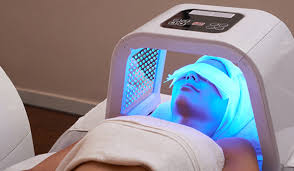
The Benefits and Risks of Long-Term Light therapy Use
Light therapy, also known as phototherapy, is a non-invasive treatment that uses different types of light to improve various conditions, including seasonal affective disorder (SAD), sleep disorders, and skin conditions. While light therapy is generally considered safe, there are potential benefits and risks associated with long-term use.
Benefits of Long-Term Light therapy Use
Improved Mood
Long-term light therapy use can help regulate the body’s circadian rhythm, which can improve mood and reduce symptoms of SAD.
Better Sleep
Light therapy can also help regulate the body’s sleep-wake cycle, which can improve sleep quality and reduce symptoms of sleep disorders.
Improved Skin Health
Red and blue light therapy can improve skin health by reducing inflammation and promoting collagen production, which can improve the appearance of fine lines, wrinkles, and acne.
Non-Invasive Treatment
light therapy is a non-invasive treatment option, which means that it does not involve surgery or medication, making it a safe and accessible treatment option for many individuals.
Risks of Long-Term Light therapy Use
Eye Damage
Exposure to bright light for extended periods can cause damage to the eyes, including the development of cataracts and retinal damage. It’s important to use protective eyewear when undergoing light therapy.
Skin Damage
Exposure to UV light can damage the skin, leading to premature aging, sunburn, and an increased risk of skin cancer. It’s important to use a light therapy device that emits low levels of UV light or no UV light at all.
Bipolar Disorder
Light therapy can trigger manic episodes in individuals with bipolar disorder, so it’s important to consult with a healthcare provider before using light therapy if you have this condition.
Interference with Medication
Light therapy can interfere with certain medications, including antidepressants and some antibiotics, so it’s important to consult with a healthcare provider before using light therapy if you are taking medication.
In conclusion, light therapy is generally considered safe and effective, but there are potential benefits and risks associated with long-term use. Improved mood, better sleep, improved skin health, and non-invasive treatment are just a few of the potential benefits of long-term light therapy use. However, risks include eye damage, skin damage, bipolar disorder, and interference with medication. If you are considering long-term light therapy use, consult with your healthcare provider to determine the best treatment plan for your specific needs and to minimize potential risks.